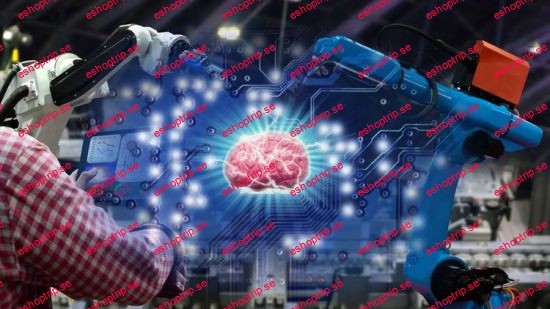Published 9/2024
Duration: 32m | Video: .MP4, 1920×1080 30 fps | Audio: AAC, 44.1 kHz, 2ch | Size: 1.27 GB
Genre: eLearning | Language: English
Smart Factory
What you’ll learn
Understand Industrty 4.0
The technologies in Industry 4.0
Maturity assessment
Business Model
Requirements
Industry professionals
Description
From Automation to Autonomy
About twelve years after entering the global manufacturing sector’s consciousness, Industry 4.0 seems to have lost much of its novelty. Its principles, technologies, market drivers, and national government policies have become known quantities. Smart factories, the intelligent, hyper-connected production plants at the centre of Industry 4.0, have been translated into detailed analysis and development objects. Our existing manufacturing automation refers to using control and information systems to automate and streamline various production processes, eliminate manual processes, reduce human error and increase productivity. Manufacturing systems are supposed to operate independently, without the need for direct human control. This will involve using advanced technologies such as artificial intelligence, machine learning and autonomous robots to create autonomous production systems that can operate without human intervention, leading to higher production speeds, improved quality and better customer satisfaction.
After three years of a tumbling journey throughout COVID, analysts predict even more robust future growth for smart factories and their contributions to global economic growth. The study by Markets and Markets (Jan 2023) claims that within the next five years, the Industry 4.0 market size will project to reach USD 165.6 billion by 2026 from USD 73.9 billion in 2022 at a GAGR of 20.6%. At the centre of such forecast lies the Smart Factory, which will produce more goods and services at lower costs as the source of these gains. Manufacturers predict that by 2030, smart factories will drive a USD138 billion market.
Whether one believes that the oversized benefits these and other reports describe are achievable, smart factories’ global growth across manufacturing is a real trend, one worth another look.
1.1 Big changes in the global manufacturing sector
Global manufacturing operations have undergone tumultuous times. Under globalisation, developing economies joined the global manufacturing value chain. It fulfilled the work at the lower end of the supply chain, while first-tier manufacturing nations stayed at the higher end. We’ve seen the societal prosperity based on such global structure. However, the system has proven to be vulnerable. In a choking recession cutting off market demand due to unpredictable events like COVID-19, manufacturing verticals and employment will continue a severe tumble.
Who this course is for
For decision makers in manufacturing industry
Homepage
https://www.udemy.com/course/smart-factory-industry-40










